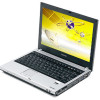Toshiba Satellite U200-ST3311 User Manual - Page 191
Memory problems
 |
View all Toshiba Satellite U200-ST3311 manuals
Add to My Manuals
Save this manual to your list of manuals |
Page 191 highlights
191 If Something Goes Wrong Resolving a hardware conflict The operating system displays the Device Properties dialog box, which provides an array of tabs. They may include: ❖ The General tab, which provides basic information about the device. ❖ The Resource tab, which lists resources assigned to the monitor, optional external optical drive, optional external diskette drive, and other power-using functions. This tab does not appear if the device is not using resources. ❖ The Driver tab, which displays the drivers being used by the device. The tabs that appear in the dialog box vary from one device to another. A Troubleshooting button is also present. 6 Click Troubleshoot... A Help and Support window for that device appears. For more information about Device Manager, refer to the Windows® operating system Help. Memory problems Incorrectly connected or faulty memory modules may cause errors that seem to be device-related. Your computer has two memory module slots. Both slots are located under the keyboard and should only be accessed by a Toshiba authorized service provider. TECHNICAL NOTE: You must have at least one memory module installed for the computer to work.















